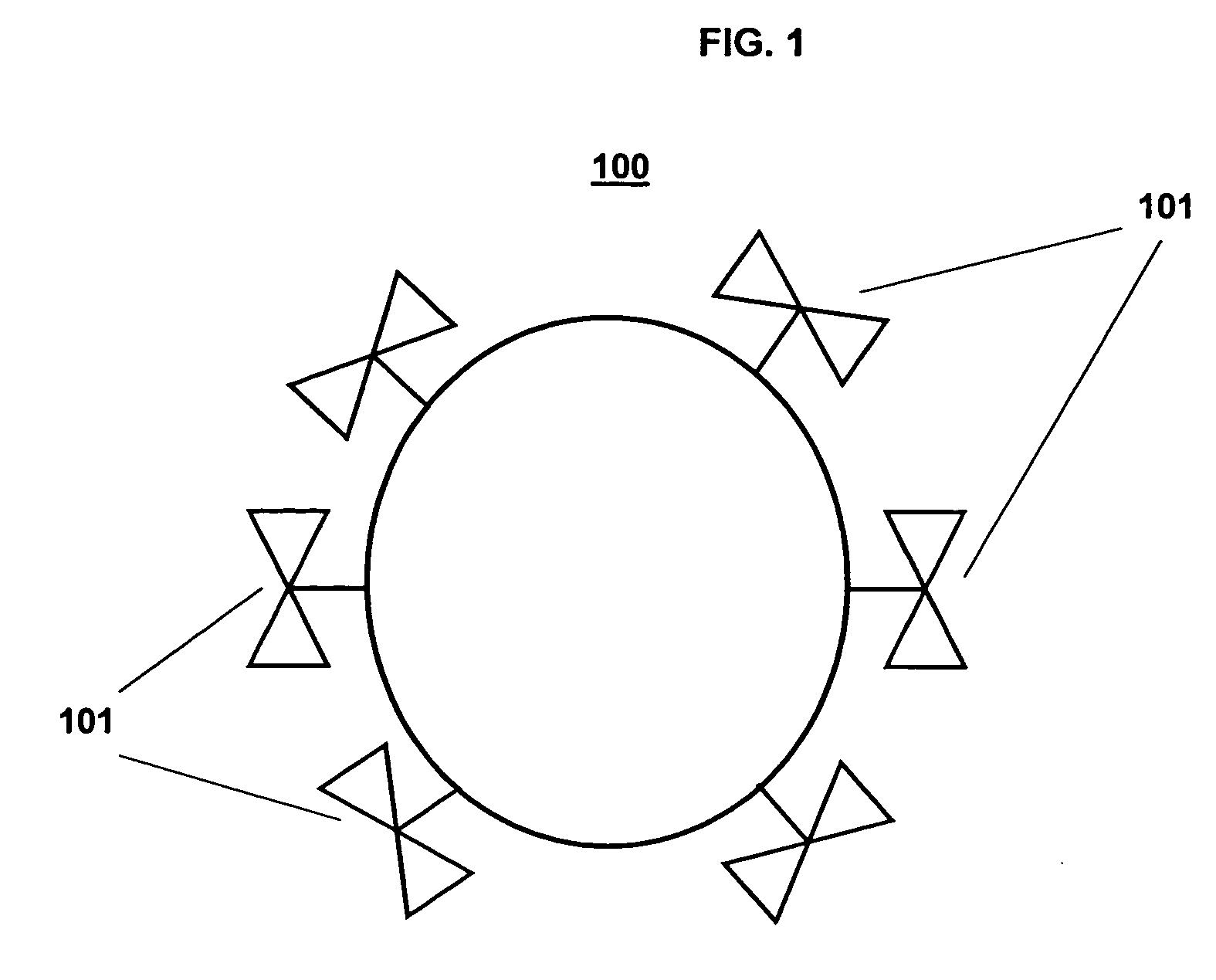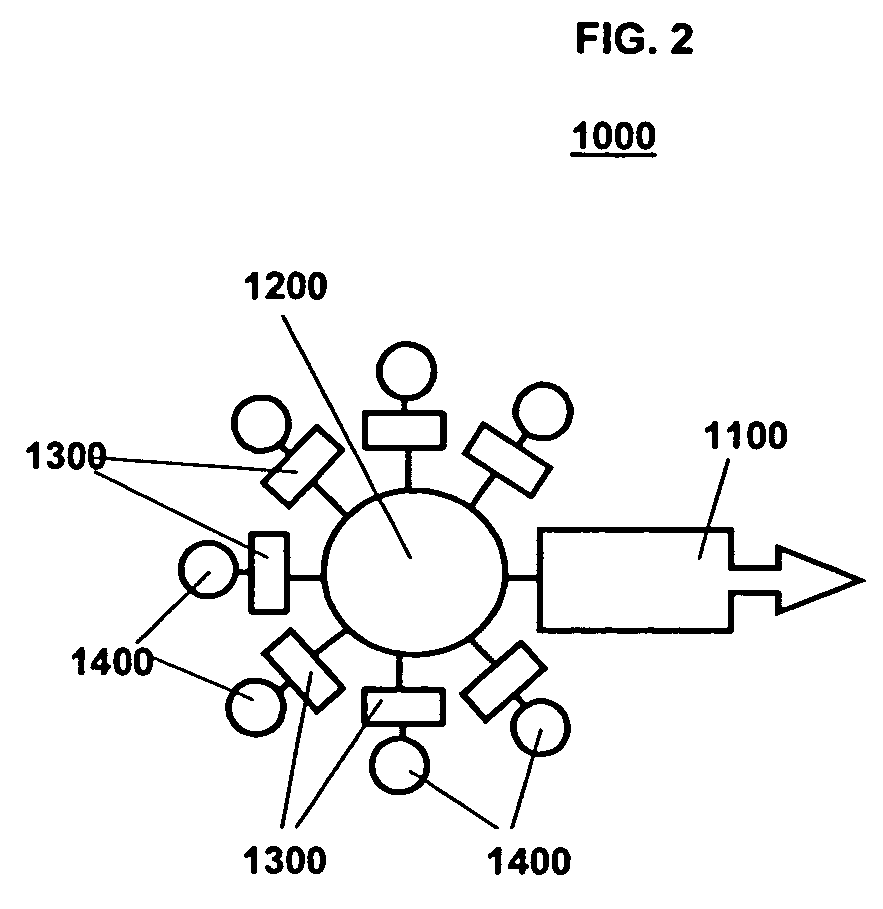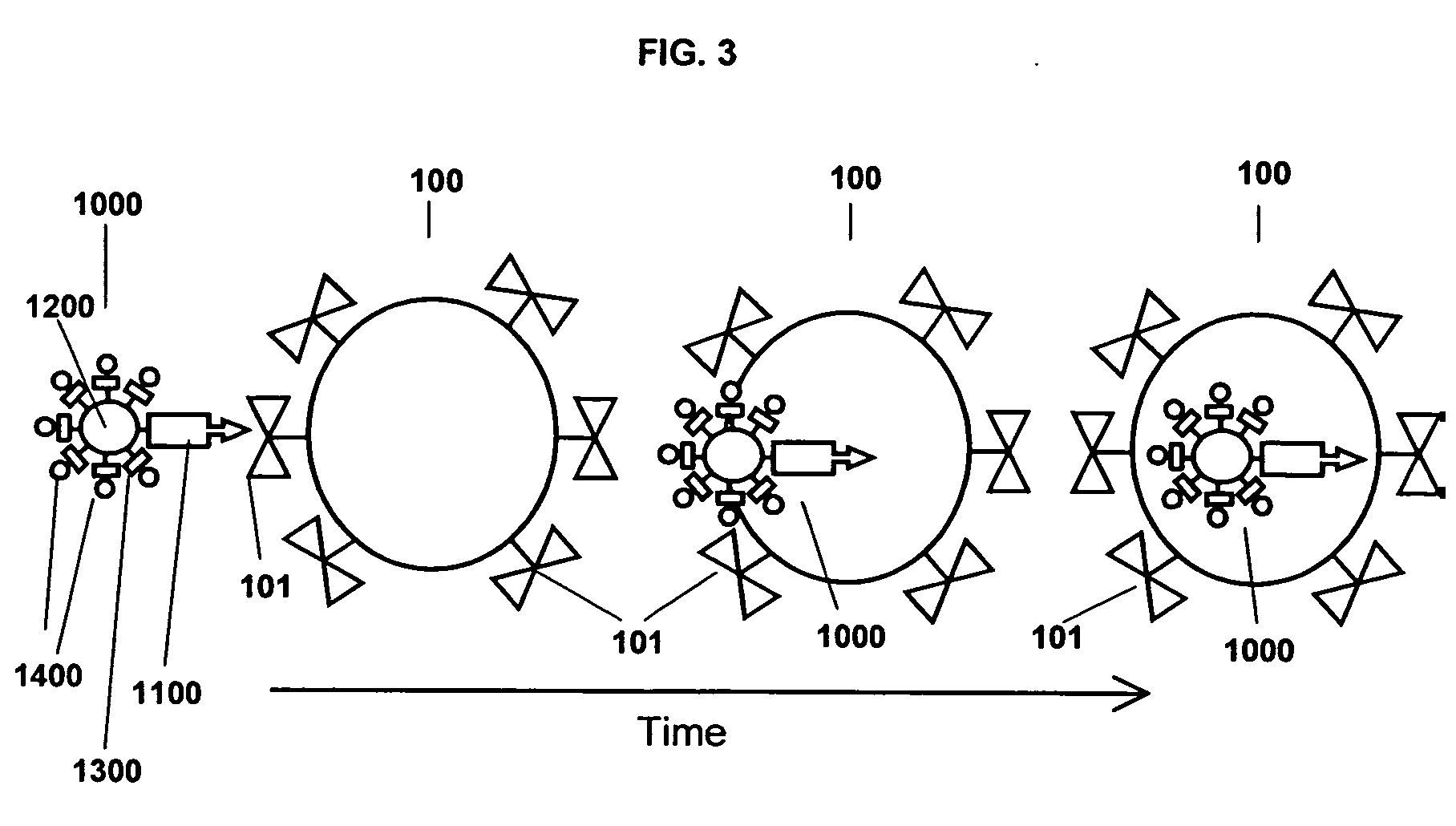Method and composition for the treatment of cancer by the enzymatic conversion of soluble radioactive toxic precipitates in the cancer
a radioactive toxic precipitate and cancer technology, applied in the field of cancer treatment, can solve the problems of insufficient potency of agents at tolerable doses to kill resistant cancer cells, and agents often fail to treat cancer successfully
- Summary
- Abstract
- Description
- Claims
- Application Information
AI Technical Summary
Benefits of technology
Problems solved by technology
Method used
Image
Examples
example 1
Synthesis of an Anti-EGF-Antibody-Dextran—3-Indoxyl Phosphate-Phosphoenol Pyruvate Conjugate
A Step 1 Reagent is shown in FIG. 6. The cell targeting agent 1110, is a monoclonal antibody to the EGF receptor; the carrier moiety 1210, is the polysaccharide dextran; and the platform building material 1310, is a substituted 3-indoxyl phosphate derivative that has attached to it an additional molecular structure 1410 of a phosphoenol pyruvate derivative.
As shown in FIG. 6, the Step 1 Reagent 1010 forms the intracellular aqueous insoluble nano-platform 1510 by linking aggregates of indigo to form micro-precipitates. Some or all of the platform building materials include the additional molecular structure 1410, a derivative of phosphoenolpyruvate, which is an irreversible inhibitor of the enzyme UDP-N-acetylglucosamine enolpyruvoyltransferase that is the targeting moiety of the Step 3 Bispecific Reagent. The indoxyl phosphate platform building materials are linked to the targeting moiety...
example 2
Synthesis of a Transferrin-Albumin-Bis-3-Indoxyl Glycoside-Loracarbef Conjugate
A Step 1 Reagent is shown in FIG. 10. The cell targeting agent 1120, is human transferrin; the carrier moiety 1220, is human serum albumin; and the platform building material 1320, is a substituted bis-3-indoxyl glycoside (e.g., glucoside or galactoside) derivative that has attached to it an additional molecular structure 1420 of the carbacephem analog, Loracarbef.
As further in FIG. 10, once inside the targeted cells, the Step 1 Reagent in the second example forms the intracellular aqueous insoluble nano-platform 1520 by linking aggregates of polyindigo to form micro-precipitates. The platform building materials are bisindoxyl lysine derivatives. Some or all of the platform building materials include the additional molecular structure 1420, a derivative of Loracarbef, which is an irreversible inhibitor of a mutant β-lactamase that is the targeting moiety of the Step 3 Bispecific Reagent. These bisindo...
example 3
Synthesis of a Folate-Immunoglobulin-Porphyrin-α-Difluoromethylornithine Conjugate
A Step 1 Reagent is shown in FIG. 14. In this example, the Step 1 Reagent 1030 is comprised of a cell targeting agent 1130, which is a folate derivative; a carrier moiety 1230, which is human immunoglobulin; a platform building material 1330, which is an appropriate porphyrin derivative that has attached to it an additional molecular structure 1430 that is an α-difluoromethylornithine analog (Metcalf, et al., J. Am. Chem. Soc. 100: 2551-2553, 1978), which is an irreversible inhibitor for the enzyme ornithine decarboxylase. Alternatively, a similar system would use an additional molecular structure that is α-difluoromethylarginine, which is an irreversible inhibitor for the enzyme arginine decarboxylase.
As shown in FIG. 14, the Step 1 Reagent forms the intracellular aqueous insoluble nano-platform 1530 by the aggregation of porphyrin platform building materials released from the Step 1 Reagent. The ...
PUM
| Property | Measurement | Unit |
|---|---|---|
| molecular structure | aaaaa | aaaaa |
| organic functional | aaaaa | aaaaa |
| β-lactamase | aaaaa | aaaaa |
Abstract
Description
Claims
Application Information
 Login to View More
Login to View More - R&D
- Intellectual Property
- Life Sciences
- Materials
- Tech Scout
- Unparalleled Data Quality
- Higher Quality Content
- 60% Fewer Hallucinations
Browse by: Latest US Patents, China's latest patents, Technical Efficacy Thesaurus, Application Domain, Technology Topic, Popular Technical Reports.
© 2025 PatSnap. All rights reserved.Legal|Privacy policy|Modern Slavery Act Transparency Statement|Sitemap|About US| Contact US: help@patsnap.com



